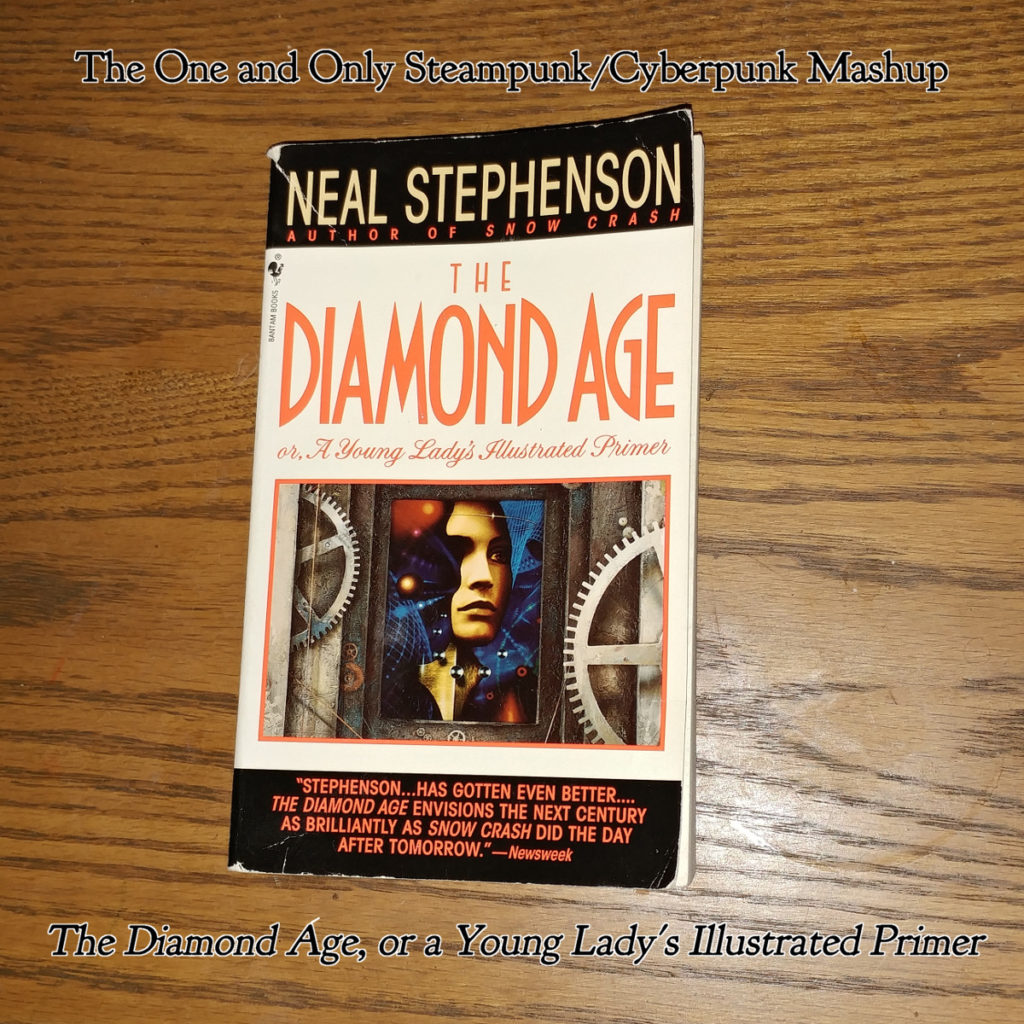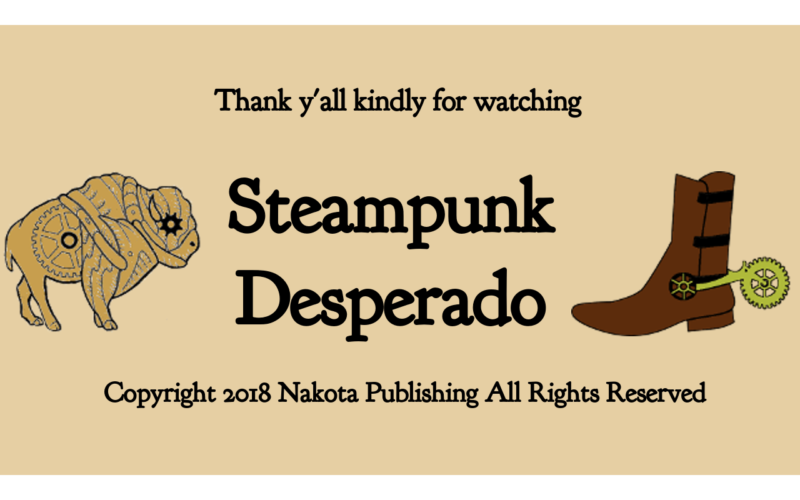
I discovered Neal Stephenson’s novel The Diamond Age, or a Young Lady’s Illustrated Primer shortly after it was published in 1995. I’d read his preceding book Snow Crash and loved its anarchic spirit. By contrast, Diamond Age seemed stodgy at first as it centered on the prim and proper Neo-Victorians. As I read on, however, I was greatly impressed at the way the author melded historical and philosophical themes with cutting-edge technology. Since it’s been over two decades, I decided to experience it again, but this time on audiobook.
The book centers on nanotech, the science of building things from microscopic self-replicating machines in imitation of biological life. Scientist K. Eric Drexler predicted its ascendancy in his 1986 book Engines of Creation. Though we’ve seen some of Drexler’s predictions come true, much of the technology’s promise (and potential menace) has yet to be realized. Stephenson’s use of this as a plot element makes Diamond Age cyberpunk. Yet the book’s style is delightfully Victorian, not just with the characters but its rich language. It has another thing I love – a long complicated title and wonderfully arcane chapter headings such as “Nell & Harv’s General Living Situation; the Leased Territories; Tequila.”
The story takes place in and around Shanghai in the late 21st Century. Just offshore, a number of competing non-Chinese entities have several artificial islands, called the “Leased Territories” or LT. Here they’ve assembled a diverse workforce supported by manufacturing and trade. Understandably, the native Chinese resent this foreign influence.
Diamond Age is so named because nanotech has made diamonds cheap as glass and therefore ubiquitous. The book’s Neo-Victorians resemble today’s steampunk movement, only much more serious. Having become wealthy from their technical innovations, they live the Victorian lifestyle by choice. They dwell in enclaves scattered throughout the world’s major cities and on artificial islands such as Atlantis-Shanghai. The Neo-Victorians comprise an artificial nation in competition with Japan, India, and other quasi-states such as the geek-dominated First Distributed Republic.
As is typical for a Stevenson work, it has a long and complex plot, with numerous characters. The primary ones are Nell, a young girl from an impoverished, abusive family, and John Hackworth, a brilliant nanotech engineer and staunch Neo-Victorian. The latter designs an amazing interactive book called The Young Lady’s Illustrated Primer for a wealthy CEO as a gift for the man’s grand-daughter. Hackworth decides to make an unauthorized copy for his own young daughter but is mugged by Nell’s brother Harv, who gives the amazing book to his sister. The quest to recover the book and Nell’s magical adventures within it are the central threads of the plot.
Though the Neo-Victorians bring the book a 19th Century British feel, the book’s many Chinese characters provide a contrasting Confucian viewpoint. The LT has an impoverished “white trash” underclass and a violent criminal element, which Nell and Harv represent. There’s also an element of wild, decadent sex (more or less obligatory for cyberpunk) in the form of an orgiastic cult called the Drummers.
I found that I remembered many parts of the story from the first reading, which is pretty good considering I’d read it over 20 years ago. I enjoyed it even more the second time, and it remains one of my top ten favorite novels of all time. It’s full of action, ingenious ideas, and Stephenson’s clever invented words. One of my favorites is “phyle,” meaning a culturally homogeneous distributed state such as the Neo-Victorians. The book’s only (slight) flaw is the author’s extended bouts of technical exposition, which bog down the pace of the story in places. I find these descriptions so absorbing, however, that I really don’t mind them.
I mustn’t forget to acknowledge the work of Jennifer Wiltsie, the narrator of the audio version. Normally I become irritated with narrators who get carried away with character accents, but she does them well without overdoing them. Another interesting note: in 2007 the Sci-Fi Channel announced plans to make the book into a miniseries, and in 2009 hired George Clooney as an executive producer, yet it was never done. Shortly after that, the steampunk boom of the twenty-aughts went bust. I have a theory about why that happened, which I’ll detail at a later date.
Neal Stephenson’s Diamond Age is a unique novel, the only one I know that combines elements of steampunk and cyberpunk. It’s one of my very favorite books and I highly recommend it, with the caveat that there’s a fair amount of sex and violence within. If I were inclined to break my rating system by awarding 6 gears out of 5, this work would be my motivation. Five gears!



































